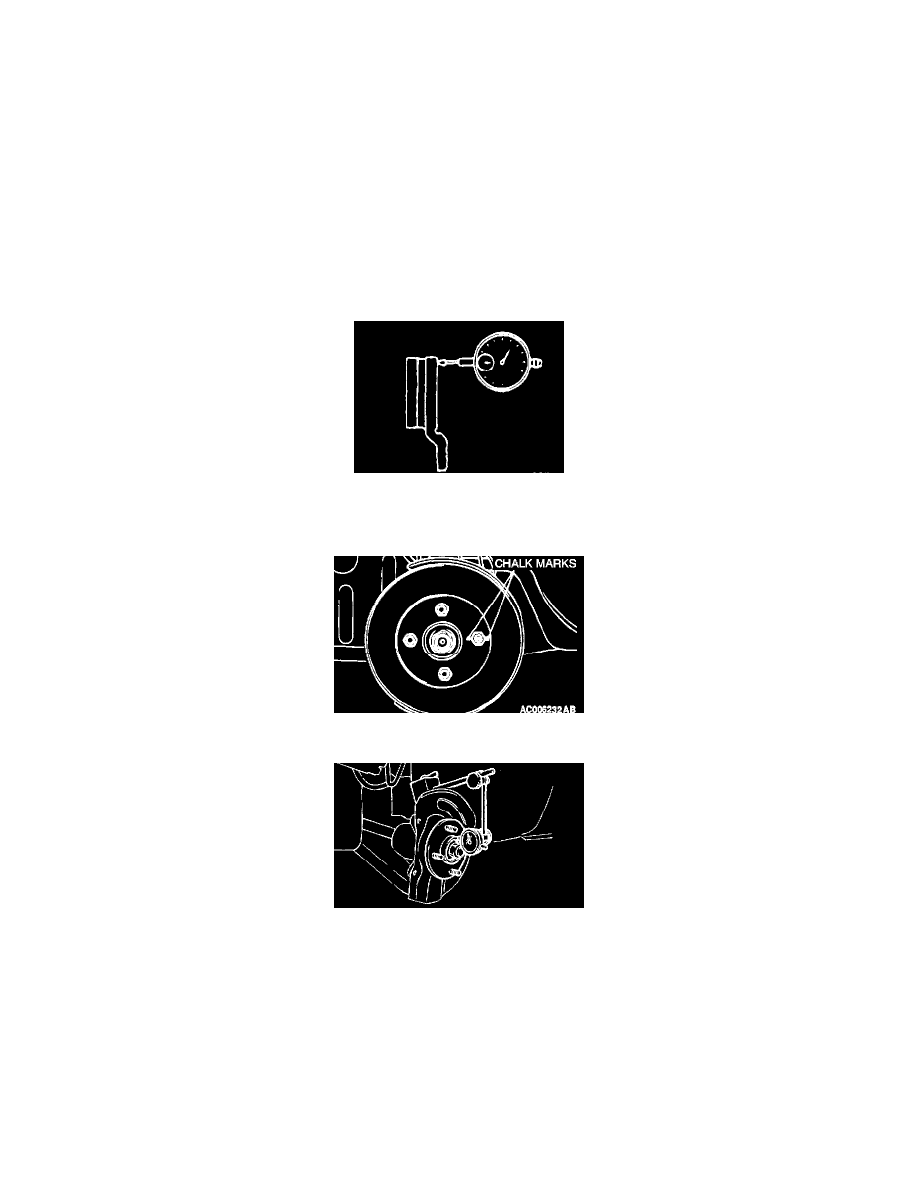Lancer LS L4-2.0L SOHC (2002)

CAUTION:
-
After a new brake disc is installed, always grind the brake disc with on-the-car type brake lathe. If this step is not carried out, the brake disc
run-out exceeds the specified value, resulting in judder.
-
When the on-the-car type lathe is used, first install M12 flat washer on the stud bolt in the brake disc side according to the figure, and then
install the adapter. If the adapter is installed with M12 flat washer not seated, the brake disc rotor may be deformed, resulting in inaccurate
grinding.
-
Grind the brake disc with all wheel nuts diagonally and equally tightened to the specified torque 100 Nm (74 ft. lbs.). When all numbers of
wheel nuts are not used, or the tightening torque is excessive or not equal, the brake disc rotor or drum may be deformed, resulting in judder.
3. If thickness variation exceeds the specification, turn rotor with an on-the-car type brake lathe ("Accuturn-8750" or equivalent).
If the calculated final thickness after turning the rotor is less than the standard value, replace the disc.
FRONT BRAKE DISC RUN-OUT CHECK AND CORRECTION
1. Remove the brake assembly, and then hold it With wire.
2. Temporarily install the disc with the hub nut.
3. Place a dial gauge approximately 5 mm from the outer circumference of the brake disc, and measure the run-out of the disc.
Limit: 0.06 mm (0.002 inch)
4. If the brake disc run-out exceeds the limit, correct it as follows:
1) Chalk phase marks on the wheel stud and the brake disc, which run-out is excessive as shown.
2) Remove the brake disc. Then place a dial gauge as shown, and measure the end play by pushing and pulling the wheel hub.
Limit: 0.06 mm (0.002 inch)
3) If the end play exceeds the limit, disassemble the hub and knuckle assembly to check each part.
